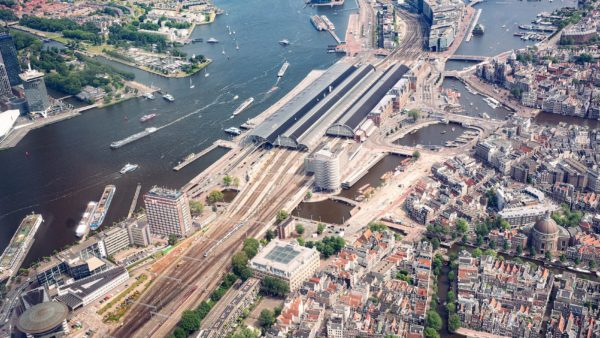China’s obsession with bringing rail lines to every corner of its vast domain has received the backing of an academic report that found that, in certain circumstances, it can transform a region’s economy.
When the UK government was making the case for the HS2 rail line between London, Birmingham and the northern cities of Manchester and Leeds, it asked KPMG to work out what effect a new rail line would have on the wider British economy.
The report then came under fire from opponents of the project, and a number of eminent academics who questioned the assumptions and the statistical methodology used to arrive at those conclusions.
The economic consultant duly reported back that the line would act as a catalyst for productivity and thereby create 250,000 jobs and boost national output by $26bn–
One, a professor of geography at the London School of Economics called Henry Overman, told a parliamentary committee that KPMG has “made up” its own procedure. This was certainly true, as the report’s authors admitted in the report itself.
On the other hand, they pointed out that there was no generally agreed way of estimating the effect rail has on productivity, trade and regional competitiveness, so what choice did they have?
The result of that argument was that the UK government gave up trying to make a case based on an economic cost-benefit analysis and turned to rail capacity instead.
However, a recent paper produced by two Chinese academics at Tsinghua University in Beijing has given an empirical estimate of the economic impact of one high-altitude line on western China – and they are dramatic.Â
The line they studied was the Qingzang link that connects Beijing to the Tibetan capital of Lhasa. Work on this link was undertaken completed in October 2006. At the beginning, only three trains ran: a Beijing-Lhasa service ran every day, and services between Chengdu and Shanghai and Lhasa every other day.Â
In July 2010 the Shanghai-Lhasa service became daily, and a daily service between Xining and Lhasa was added.
As the authors comment, the link forms a natural experiment, because it connects the economically underdeveloped regions of Tibet and Qinghai to the more dynamic eastern provinces, and it was paid for by the Chinese government.
This gets round one of the problems that the KPMG survey walked straight into, which is deciding whether the rail line is the cause of economic activity that would not have happened otherwise, or the effect of activity that would have taken place anyway.
In the case of the UK, the situation was muddied by the fact that there were already a lot of reasonably efficient and effective transport modes between the urban centres and those centres were, in any case, relatively close.Â
In this case, it was definitely the cause, and the researchers could be sure of this by looking at the effect on counties along the railway compared with those distant from it.
The baseline results show that the Qingzang railway stimulated a 33% or so increase in economic activity in the “railway counties”.
The estimate provides an aggregate effect of the gains resulting from the decrease in transportation costs and the more nebulous benefits of better access to goods, labour and technology. The importance of this research for China is immense.
The country is presently investing about 7% of its GDP in transport projects of one kind or another, and 38% of the recent $645bn stimulus package, so it wants to know that the money has been well spent.
An interesting question for economists is to determine how well the effects of a relatively low-frequency and low speed service into an economically underdeveloped area can be related with a high-speed, high-frequency service into an economically developed region.Â
One issue that may be relevant is that it is not clear to what extend the economic growth of the railway counties in China is at the expense of the non-railway counties: this has been one of the issue picked up on by the UK debate. On the other hand, that is a good argument for more railways, not fewer …
25 July: This article has been updated from an earlier version which said that the Qingzang line was high speed.
Comments
Comments are closed.











Except that the Beijing to Lhasa rail line is NOT “high speed”.
I have not consulted the original article, but the Qingzang railway is the culmination of extending a railway from the east of China to Lhasa. (815 kms from Xining (reached in 1959) to Golmud in 1984 and finally in 2006 the last 1140 kms over the Tibetan plateau (highest point of railway 5071m asl.))
This section is single track and diesel operated with a maximum speed of 120kph reduced to 100kph over the permafrost section. It bears no similarity to the China High Speed rail network. It has undoubtedly reduced the cost of transport of freight and passengers but as a project has no relevance to any discussions about high speed passenger railways.
Quite right, Mr Warburton. The headline is wrong – it should be high altitude rather than high-speed. The relevance is to the effect of a new train line on a wider economy.